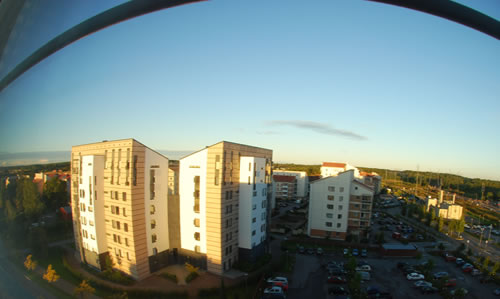|
In pretty as a postcard Helsinki

Photograph by Preeti Verma Lal
It was early morning and the inn that we walked into had a lavish Finnish spread – piping hot four-grain porridge, dark rye bread, grape fruit so succulent and red as I have never seen before, dainty cakes with rice filling, sinful pastries, blue cheese, thin ham, fresh coffee… That seemed like a hearty beginning into a week-long journey. As the bus drove past ancient buildings and dense forest, I look at all the Euros stuffed in my purse and I connect facts.
At 20,000 ft above in the skies, the blue of the fluffy clouds was not the only one driving away my mundane, urban blues – there was the powder blue of the sheath of the stewardess, her eyes as azure as the sea beneath, the indigo of the seat that reclined lazily at 176 degrees and the endless expanse of the cobalt sky bathed in the burnished orange of the morning sun. Helsinki seemed like a gray blur hundreds of inches away, the blue of the sea broken by wanton white waves that were visible even from the aircraft. I could not count the 315 islands that make Helsinki neither could I recognize the 900 restaurants that dot the 457-year old city. But the closer it got the more the picturesque postcard was coming to life, inch by inch. And when I touched the tarmac, Helsinki looked prettier than the postcards. Not many cities do.
It was early morning and the inn that we walked into had a lavish Finnish spread – piping hot four-grain porridge, dark rye bread, grape fruit so succulent and red as I have never seen before, dainty cakes with rice filling, sinful pastries, blue cheese, thin ham, fresh coffee… That seemed like a hearty beginning into a week-long journey. As the bus drove past ancient buildings and dense forest, I look at all the Euros stuffed in my purse and I connect facts. Most bank notes – even Time and Playboy magazines – are made of Finnish paper. It is not just bank notes, Finland is also home to Nokia, the phone makers (Nokia is actually a tiny village in Finland). But we were not headed to Nokia; the destination was Rock Church, a church carved out of granite mountains. You do not see the church spires, for there are none – the church is like a cave with a huge harp and where live music reverberates in the dome made of 20 kms of copper wire. If the rock church is unique in its design, so is the monument to Sibelius, the most famous Finnish composer. The monument sits smug in a birch forest next to a marina and is made of steel – it looks like hundreds of steel flutes bunched carelessly, yet beautifully. Not to far is the bust of the composer shining amidst buff stones. I pick dry birch flowers for my scrap book and think of Senate Square and the Helsinki Cathedral that we are headed next.
The Senate Square is so huge that you would think that a small town could easily fit into it. The cobbled courtyard is beautiful and the red of the bricks are offset by the 155-year old Cathedral, arguably the most photographed building in Helsinki. In the Square you can see neoclassical architecture at its best. But if you want to see Helsinki as its real self, you need to be at the Market Square and shop for traditional handicraft or sit under the umbrellas and slurp on mushroom soup and smoked salmon. The mushrooms, the peas and berries add colour to the market by which stands the famous Havis Amanda, the bronze fountain which is 100 years old. The statue of the girl becomes the favourite site on the eve of May Day when students give her a foam bath and she even gets a student cap. The foam bath ritual attracts onlookers from around the world.
When in Helsinki you have to be in the Design district to look at a stunning array of design pieces; you might not find a better range anywhere.
But then Helsinki is so much about a lot of things that you might not see anywhere else. So picturesque is the place. So prettier is it than the postcards.
Published
in The Times of India, December 2007
Contact:
Preetivermalal@gmail.com |

